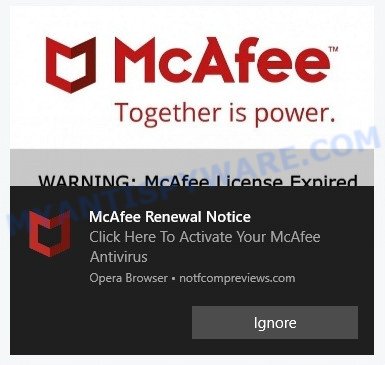
#MCAFEE ANTIVIRUS SCAMS HOW TO#
Phishing scammers often undo their own plans by making simple mistakes that are easy to spot once you know how to recognize them. Scammers work hard to make phishing messages closely resemble emails and texts sent by trusted companies, which is why you need to be cautious when you open these messages and click the links they contain. If you don’t look carefully at the emails or texts, however, you might not be able to tell the difference between a regular message and a phishing message. What is a phishing email/text message?Ī phishing email or text (also known as SMiShing) is a fraudulent message made to look legitimate, and typically asks you to provide sensitive personal information in various ways. Scammers disguise themselves as major corporations or other trustworthy entities to trick you into willingly providing information like website login credentials or, even worse, your credit card number. Phishing is a cybercrime that aims to steal your sensitive information. Protect yourself from phishing by reviewing some examples of phishing emails and learning more about this common online scam. What do you do? While you may be tempted to click on a link to immediately resolve the issue, this is likely the work of a cybercriminal. Phishing is a scam that tricks you into voluntarily providing important personal information. Right now, get an annual plan with TotalAV for only $19 at get an email from claiming that they have found suspicious activity on your credit card statement and are requesting that you verify your financial information. Antivirus is vital - Always have a trusted antivirus program updated and running on all your devices.They could be malicious and infect your device with malware and/or steal sensitive information. Avoid links and attachments - Don’t click on links or attachments you receive in unsolicited emails.That’s exactly what the scammers want you to feel. Sense of urgency - Here’s a red flag: Any message that tells you to “act now!” or makes you feel rushed and anxious.Safeguard your information - Never give out personal data if you don’t know the sender of a text or email or can’t verify their identity.Here are some more tips to stay safe from these types of scams: There is always a possibility that a criminal legitimately renewed a McAfee subscription using your details and bank account. It’s always a good idea to keep a close eye on your banking statements for any unusual activity. Here, you can view the invoice history of the product. Select Account, then choose Subscriptions.

Type your registered email address and password, and then click Log In.

McAfee warns that you must never blindly trust an email like that and always check your subscription status on the official website. However, you might take the email seriously if you are already a customer. You can do several things to stay safe, so if you don’t have a McAfee account, deleting the email is a good start. What you can do about itĪccording to McAfee, the company is regularly the target of scammers and has set up a dedicated educational page where you can report such activity.

The “renew subscription” link captured personal and financial information.
#MCAFEE ANTIVIRUS SCAMS WINDOWS#
Late last year, many users saw malicious pop-up windows in their browsers, claiming the antivirus subscription had expired. This isn’t the first time McAfee has been used in this scam.


 0 kommentar(er)
0 kommentar(er)
